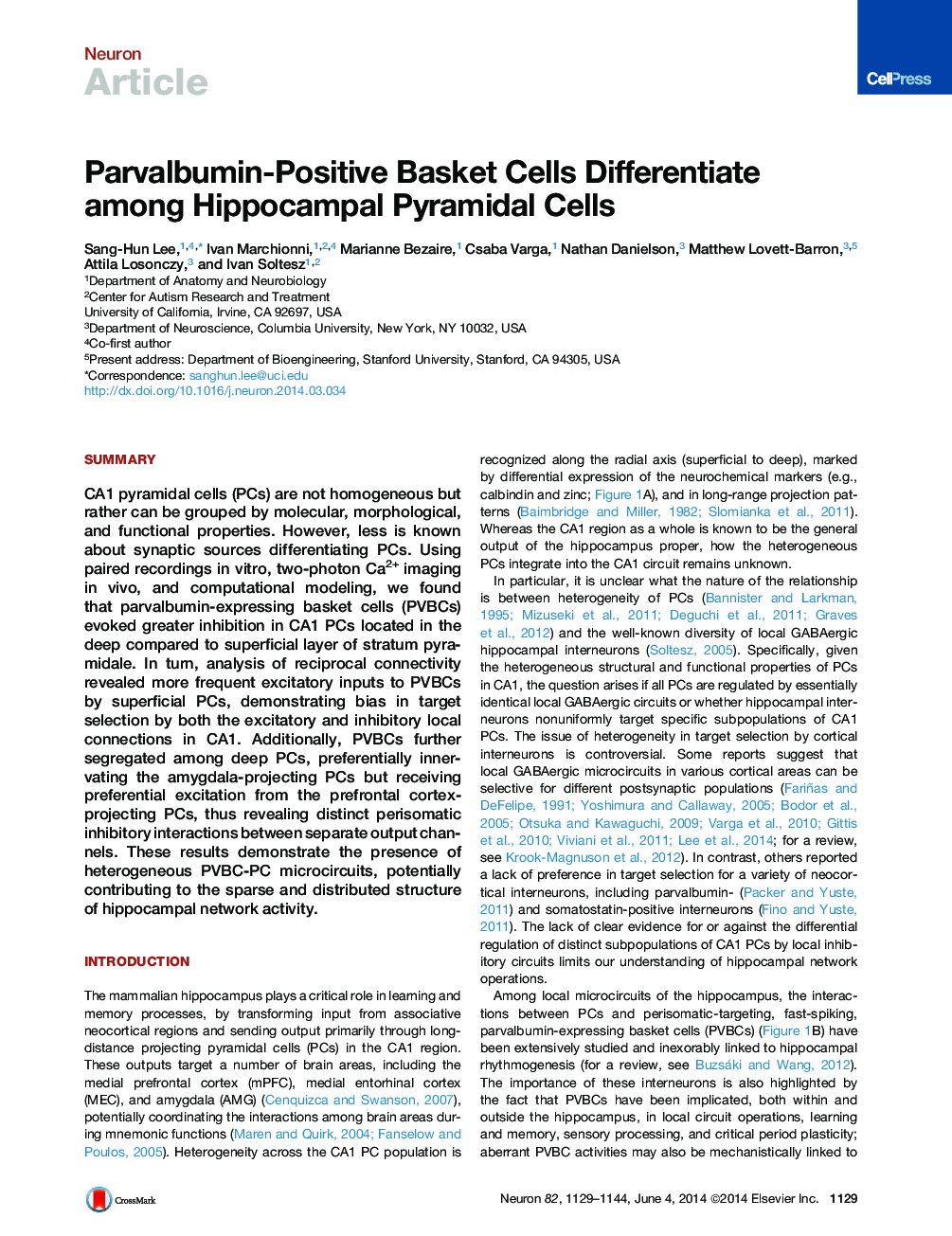| Article ID | Journal | Published Year | Pages | File Type |
|---|---|---|---|---|
| 4321063 | Neuron | 2014 | 16 Pages |
•Nonuniform inhibition of pyramidal cells by parvalbumin-expressing basket cells•Biased excitation of PV basket cells by functionally distinct pyramidal cells•Routing of perisomatic inhibition by specialized network motifs•Specialized connectivity as basis for interactions between distinct output channels
SummaryCA1 pyramidal cells (PCs) are not homogeneous but rather can be grouped by molecular, morphological, and functional properties. However, less is known about synaptic sources differentiating PCs. Using paired recordings in vitro, two-photon Ca2+ imaging in vivo, and computational modeling, we found that parvalbumin-expressing basket cells (PVBCs) evoked greater inhibition in CA1 PCs located in the deep compared to superficial layer of stratum pyramidale. In turn, analysis of reciprocal connectivity revealed more frequent excitatory inputs to PVBCs by superficial PCs, demonstrating bias in target selection by both the excitatory and inhibitory local connections in CA1. Additionally, PVBCs further segregated among deep PCs, preferentially innervating the amygdala-projecting PCs but receiving preferential excitation from the prefrontal cortex-projecting PCs, thus revealing distinct perisomatic inhibitory interactions between separate output channels. These results demonstrate the presence of heterogeneous PVBC-PC microcircuits, potentially contributing to the sparse and distributed structure of hippocampal network activity.Video Abstract To view the video inline, enable JavaScript on your browser. However, you can download and view the video by clicking on the icon belowHelp with MP4 filesOptionsDownload video (22071 K)
